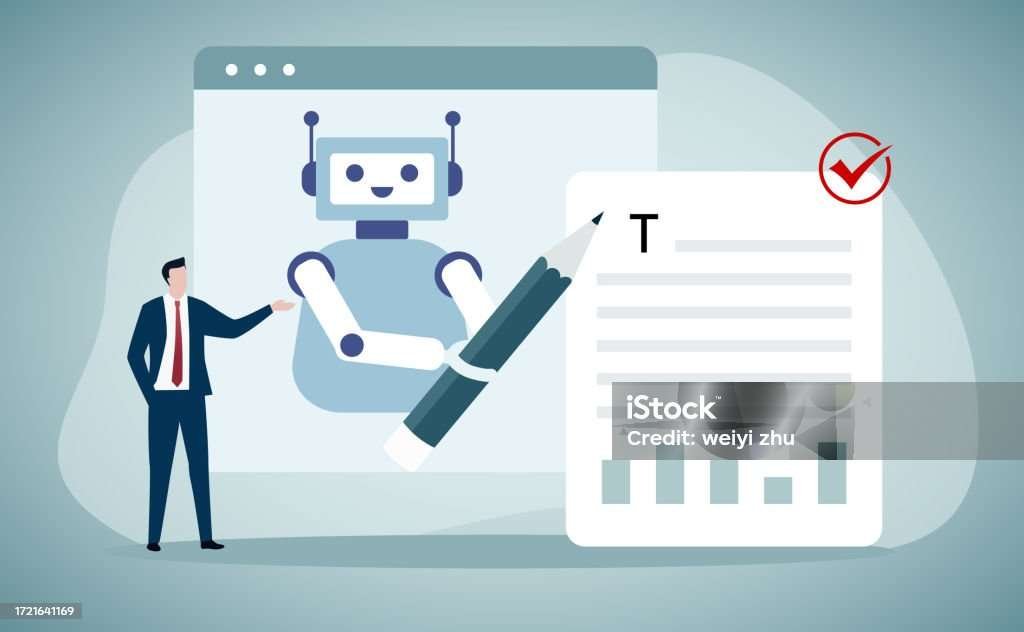SaaS Marketing Trends That Will Dominate 2025
As we step into 2025, the SaaS marketing landscape continues to evolve at breakneck speed. With changing consumer behaviors, emerging technologies, and shifting market dynamics, SaaS companies must adapt their marketing strategies to stay competitive. Based on extensive industry research and insights from leading SaaS marketers, here are the key trends that will shape SaaS marketing in 2025.
1. AI-Powered Personalization at Scale
Artificial intelligence is no longer a nice-to-have but a must-have for SaaS marketing teams. In 2025, successful SaaS companies are leveraging AI to deliver hyper-personalized experiences across the entire customer journey.
What’s Changing:
- Advanced AI algorithms analyze user behavior patterns to predict content preferences
- Dynamic website personalization adapts in real-time based on visitor data
- Email marketing campaigns automatically adjust messaging based on individual user actions
- Chatbots provide increasingly sophisticated, context-aware customer interactions
Key Implementation Areas:
- Content Personalization: Tailoring blog posts, case studies, and resources to specific user segments
- Product Recommendations: Suggesting relevant features or upgrades based on usage patterns
- Lead Scoring: Using AI to identify high-value prospects more accurately
- Customer Support: Implementing AI-powered help desks that provide instant, relevant solutions
2. Community-Driven Marketing Takes Center Stage
The shift toward community-building has accelerated significantly, with SaaS companies recognizing that engaged communities drive higher retention rates and organic growth.
Why It Matters:
- Communities generate 5x higher customer lifetime value compared to traditional marketing channels
- Peer-to-peer support reduces customer service costs by up to 40%
- Community members become brand advocates, driving organic referrals
Successful Community Strategies:
- Exclusive Member Benefits: Early access to features, special events, and premium content
- User-Generated Content Programs: Encouraging customers to share success stories and use cases
- Expert-Led Discussions: Hosting industry thought leaders for AMAs and workshops
- Gamification Elements: Implementing point systems, badges, and leaderboards to boost engagement
3. Interactive Content Dominates Engagement
Static content is losing its effectiveness as audiences demand more engaging, interactive experiences. SaaS companies are investing heavily in interactive content formats that provide immediate value.
Rising Interactive Formats:
- Assessment Tools: ROI calculators, maturity assessments, and diagnostic quizzes
- Interactive Demos: Self-guided product tours and sandbox environments
- Webinar Series: Live Q&A sessions, product deep-dives, and industry panels
- Interactive Infographics: Clickable data visualizations and exploratory charts
Performance Impact:
- Interactive content generates 2x more engagement than static content
- Conversion rates increase by 70% when interactive elements are present
- Time on page improves by 150% with interactive content
4. Video-First Marketing Strategy
Video content continues to dominate marketing channels, but 2025 sees a shift toward more authentic, educational video content that builds trust and authority.
Emerging Video Trends:
- Behind-the-Scenes Content: Showcasing company culture and development processes
- Customer Success Stories: Video testimonials and case study walkthroughs
- Educational Series: Step-by-step tutorials and best practice guides
- Live Streaming: Regular live sessions for product updates and customer support
Platform Focus:
- LinkedIn: Professional video content for B2B audience engagement
- YouTube: Long-form educational content and product demonstrations
- TikTok/Instagram: Short-form content for brand awareness and recruitment
- Native Video: Embedded videos on landing pages and product pages
5. Intent-Based Marketing and Predictive Analytics
SaaS companies are moving beyond traditional demographic targeting to focus on behavioral intent signals and predictive analytics.
Key Intent Signals:
- Content Consumption Patterns: Tracking which resources prospects engage with most
- Website Behavior: Analyzing page visits, time spent, and click patterns
- Social Media Activity: Monitoring engagement with competitor content and industry discussions
- Search Behavior: Identifying prospects actively researching solutions
Predictive Analytics Applications:
- Churn Prediction: Identifying at-risk customers before they cancel
- Upsell Opportunities: Predicting which customers are ready for premium features
- Lead Scoring: Automatically ranking prospects based on conversion likelihood
- Content Optimization: Predicting which content types will perform best
6. Sustainability and Social Responsibility Marketing
As environmental and social consciousness grows, SaaS companies are incorporating sustainability messages into their marketing strategies.
Key Focus Areas:
- Carbon Neutral Operations: Highlighting eco-friendly cloud infrastructure and practices
- Social Impact: Showcasing community involvement and charitable initiatives
- Diversity and Inclusion: Promoting diverse teams and inclusive company culture
- Ethical Data Practices: Emphasizing transparent data usage and privacy protection
Marketing Implementation:
- Impact Reports: Publishing annual sustainability and social impact reports
- Cause Marketing: Partnering with relevant non-profits and social causes
- Employee Advocacy: Highlighting team members’ volunteer work and community involvement
- Green Features: Promoting product features that help customers reduce their environmental impact
7. Micro-Influencer Partnerships in B2B
The influencer marketing landscape in B2B SaaS is shifting toward authentic partnerships with micro-influencers who have smaller but highly engaged audiences.
Why Micro-Influencers Work Better:
- Higher Engagement Rates: Micro-influencers typically have 3-5x higher engagement rates
- Authentic Relationships: Smaller audiences allow for more genuine connections
- Cost-Effective: Lower costs compared to macro-influencers with similar conversion rates
- Niche Expertise: Micro-influencers often have specialized knowledge in specific industries
Partnership Strategies:
- Co-Created Content: Collaborating on educational content and industry insights
- Product Advocacy: Featuring real users sharing genuine experiences
- Event Partnerships: Sponsoring industry events where influencers speak
- Long-term Relationships: Building ongoing partnerships rather than one-off campaigns
8. Privacy-First Marketing Approaches
With increasing privacy regulations and growing consumer awareness, SaaS companies are adopting privacy-first marketing strategies.
Key Privacy Strategies:
- First-Party Data Focus: Building robust customer data platforms using owned data
- Consent Management: Implementing clear, user-friendly consent mechanisms
- Transparent Communication: Clearly explaining data collection and usage practices
- Zero-Party Data: Encouraging customers to voluntarily share preferences and interests
Implementation Tactics:
- Progressive Profiling: Gradually collecting customer information over time
- Value Exchange: Offering valuable content in exchange for data sharing
- Privacy-Centric Design: Building privacy considerations into all marketing touchpoints
- Regular Audits: Conducting quarterly privacy compliance reviews
9. Account-Based Marketing Evolution
Account-Based Marketing (ABM) is becoming more sophisticated, with advanced targeting and personalization capabilities.
ABM 2.0 Features:
- AI-Powered Account Selection: Using machine learning to identify ideal target accounts
- Multi-Channel Orchestration: Coordinating messaging across all touchpoints
- Real-Time Personalization: Adapting content based on account engagement patterns
- Revenue Attribution: Tracking ABM impact on pipeline and revenue generation
Key ABM Tactics:
- Personalized Landing Pages: Creating custom pages for each target account
- Direct Mail Integration: Combining digital and physical touchpoints
- Sales-Marketing Alignment: Coordinating account strategies between teams
- Intent Data Integration: Using third-party intent data to time outreach
10. Emotional Intelligence in Marketing
SaaS companies are recognizing the importance of emotional connection in B2B marketing, moving beyond purely rational feature-focused messaging.
Emotional Marketing Elements:
- Storytelling: Sharing customer transformation stories and company mission narratives
- Empathy-Driven Content: Addressing customer pain points with understanding and solutions
- Human-Centered Design: Prioritizing user experience and emotional responses
- Brand Personality: Developing distinct brand voices that resonate emotionally
Implementation Strategies:
- Customer Journey Mapping: Understanding emotional touchpoints throughout the buyer journey
- Empathy Interviews: Conducting in-depth interviews to understand customer emotions
- Emotional Metrics: Tracking sentiment analysis and emotional engagement indicators
- Authentic Communication: Using genuine, conversational language in all marketing materials
Preparing Your SaaS Marketing Strategy for 2025
To capitalize on these trends, SaaS marketing teams should:
- Audit Current Capabilities: Assess which trends align with your current resources and capabilities
- Prioritize Based on Impact: Focus on 2-3 trends that will have the highest impact on your business goals
- Invest in Technology: Upgrade marketing technology stack to support new trend implementations
- Train Your Team: Ensure team members have the skills needed to execute new strategies
- Measure and Iterate: Establish clear metrics to track the success of new trend implementations
Conclusion
The SaaS marketing landscape in 2025 will be defined by personalization, community building, interactive experiences, and authentic connections. Companies that embrace these trends while maintaining focus on customer value and authentic relationships will thrive in the competitive SaaS marketplace.
The key to success lies not in implementing every trend but in selecting the ones that best align with your target audience, business goals, and available resources. Start with one or two trends that resonate most with your current strategy, and gradually expand your approach as you build capabilities and see results.
As we move through 2025, the SaaS companies that will emerge as leaders are those that understand that marketing is not just about promoting products but about building meaningful relationships with customers and creating genuine value in every interaction.



